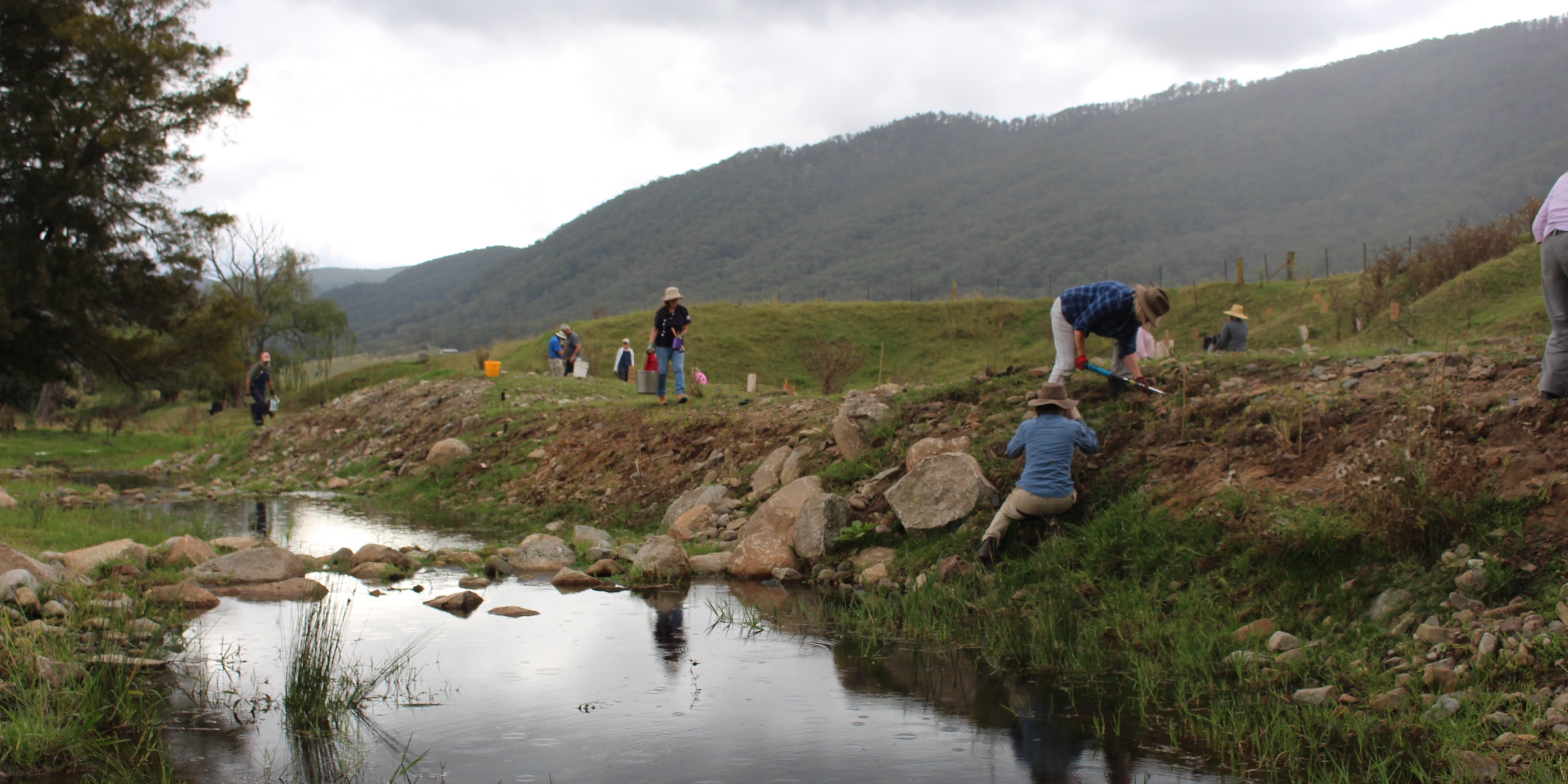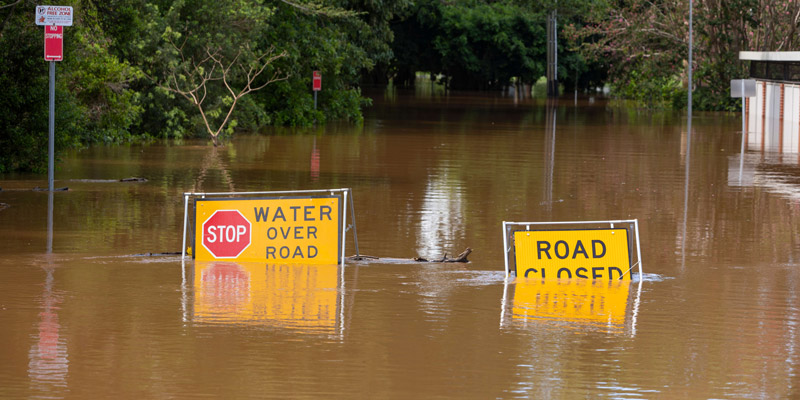Key points
- Storms and floods bring valuable rainfall and water to parts of NSW, yet they can have severe impacts on people, businesses and environments.
- Several times each year, intense low-pressure systems called east coast lows cause gale-force winds, heavy rainfall and dangerous surf conditions.
- Flooding in NSW costs our economy about $250 million every year.
- Climate change is expected to make storm and flood events more severe.
- The NSW government is adapting through the Flood plain Management Program, as well as investing in research and the ongoing development of robust climate change projections.
Causes of storms and floods in NSW
Storms and floods are influenced by different factors across NSW.
Common storm types include
- thunderstorms, which are common from October to March and are caused by warmer weather
- tornadoes, which are funnels of high wind that can occur in conjunction with thunderstorms
- tropical cyclones, which can also cause strong winds, heavy rainfall and flooding in north-eastern parts of NSW
- low pressure systems and troughs, including east coast lows.
East coast lows are when an intense low-pressure system develops off Australia’s east coast. These are the main cause of severe storms in the coastal areas of NSW and often causes gale-force winds, heavy rainfall and dangerous surf conditions.
East coast lows usually occur around 10 times each year and are more common during autumn and winter. They can grow rapidly overnight, making them one of the more dangerous weather systems in NSW.
East coast lows also provide important rainfall to fill catchments and water reservoirs across the NSW coast and nearby ranges.
Natural climate processes can cause serious flooding across NSW. Roughly every 3 to 7 years, the El Niño Southern Oscillation (ENSO) goes through its cycle, transporting moist air from the Pacific Ocean over parts of NSW. Some years, ENSO will bring above-average rainfall to NSW, causing widespread flooding. Some years it will bring much less.
The impact of storms and floods in NSW
Storms and floods are a natural part of the NSW climate. They bring valuable rainfall and water to parts of the state, yet they can have severe impacts on people, businesses and environments.
On average, flooding is estimated to cost the NSW economy around $250 million per year. Storms and floods cause damage to property and infrastructure such as roads and services. They also affect the health and wellbeing of NSW communities by causing emotional distress, injury and loss of life.
The heavy rainfall and dangerous surf conditions associated with east coast lows can cause erosion of beaches and important coastal habitats. This erosion also affects houses, infrastructure and services.
In June 2016, NSW experienced one of its most damaging east coast lows. Many coastal areas experienced intense storms with heavy rainfall, damaging winds, flash flooding, dangerous surf conditions and severe coastal erosion. The event resulted in:
- over 11,000 requests for assistance sent to the NSW State Emergency Service
- 310 flood rescues and 17 general rescues
- 2 lives lost
- 600 houses damaged
- 130 businesses directly impacted
- impacts to coastal agriculture including banana plantations and oyster farms
- estimated damage costs over $304 million in NSW.
How storms and floods are affected by climate change in NSW
Long-term climate change is causing the NSW to warm. The average temperature in NSW has been increasing since 1910. This is increasing the likelihood of extreme weather events such as heavy rainfall and storm surges near the coast.
Increased temperatures are likely to increase the risk of thunderstorms across NSW in the warmer months.
In terms of natural cycles such as the El Niño Southern Oscillation (ENSO), climate changes to temperatures and rainfall may change the pattern of these natural climate processes. Climate change will affect oceanic climate systems, like the El Niño Southern Oscillation, making rainfall and flooding even harder to predict.
In terms of east coast lows, which are the main cause of extreme storms along the NSW coast, climate modelling predicts there may be more extreme low pressure systems in the warmer months, and fewer small to moderate low pressure systems in the cooler months.
Storms caused by east coast lows vary from year to year, and decade to decade. This makes it difficult to predict when they will occur, how severe they will be, and how they might be affected by climate change.
Other impacts of climate change, such as sea level rise, will make coastal storms and floods even more damaging, as erosion and flooding will occur further up the shoreline.
Climate change projections also show that tropical cyclones are likely to occur further south and be more damaging. This will bring more severe storms and rainfall events to many areas of northern NSW.
These climate changes and impacts are projected to keep increasing in the future.
Adapting to storms and floods in NSW
To adapt to storms and floods in NSW, we need to understand them and the risks they present to our communities both now and into the future.
Local councils (with assistance from the NSW Government) are responsible for the management of flood risks in their service area.
Managing flood risk requires councils to consider:
- how to appropriately develop flood-prone land for existing and future communities
- the viability of flood mitigation structures such as levee banks
- how to educate communities about flood risks in their area, so they know how to respond safely.
Flood studies that have been completed for different LGAs in NSW can be found through the NSW Government Flood Data Portal.
The NSW Government provides information and support for local councils to manage flood risk before, during and after floods, by:
- building the resilience of local communities so they can respond to floods safely and recover faster
- planning for and managing emergencies
- developing policies and guidelines that help councils manage flood risk, including guidance on how to incorporate climate change into understanding future flood risks.
- supporting rural floodplain planning
- managing the collection of water-level data which helps issue flood warnings to communities.
Research on east coast lows and flash flooding is gathering information on their historical impacts. This local data is important for NSW to plan for future events, as larger-scale climate models cannot provide detailed future projections at this regional scale.
Related information
New South Wales Weather and Warnings Summary - Australian Bureau of Meteorology
East coast lows - Australian Bureau of Meteorology
Expert Team on Climate Change Detection and Indices (ETCCDI)
Case studies


The Living Lab, located in a Lismore main street, is a design and research collaborative conceived following the floods of 2022, which wrought untold havoc on the Northern Rivers region.

The Hawkesbury–Nepean Valley is managing flood risk by considering climate change impacts with input from local councils, businesses and the community.
